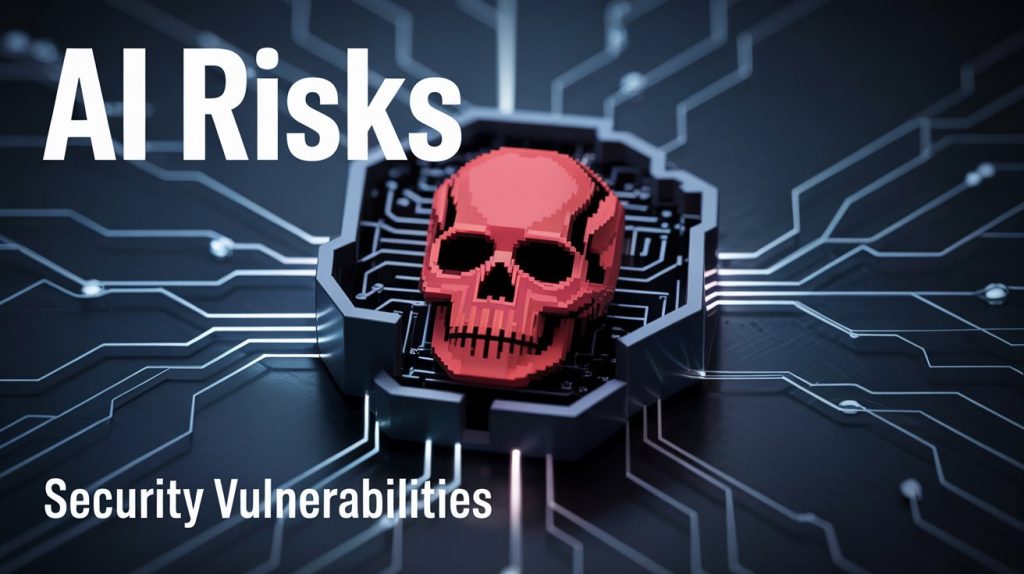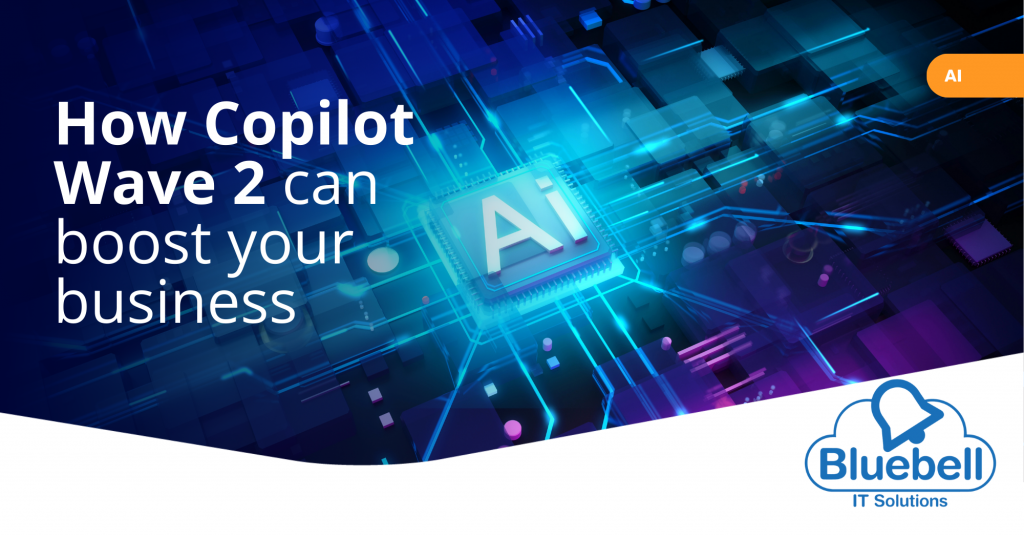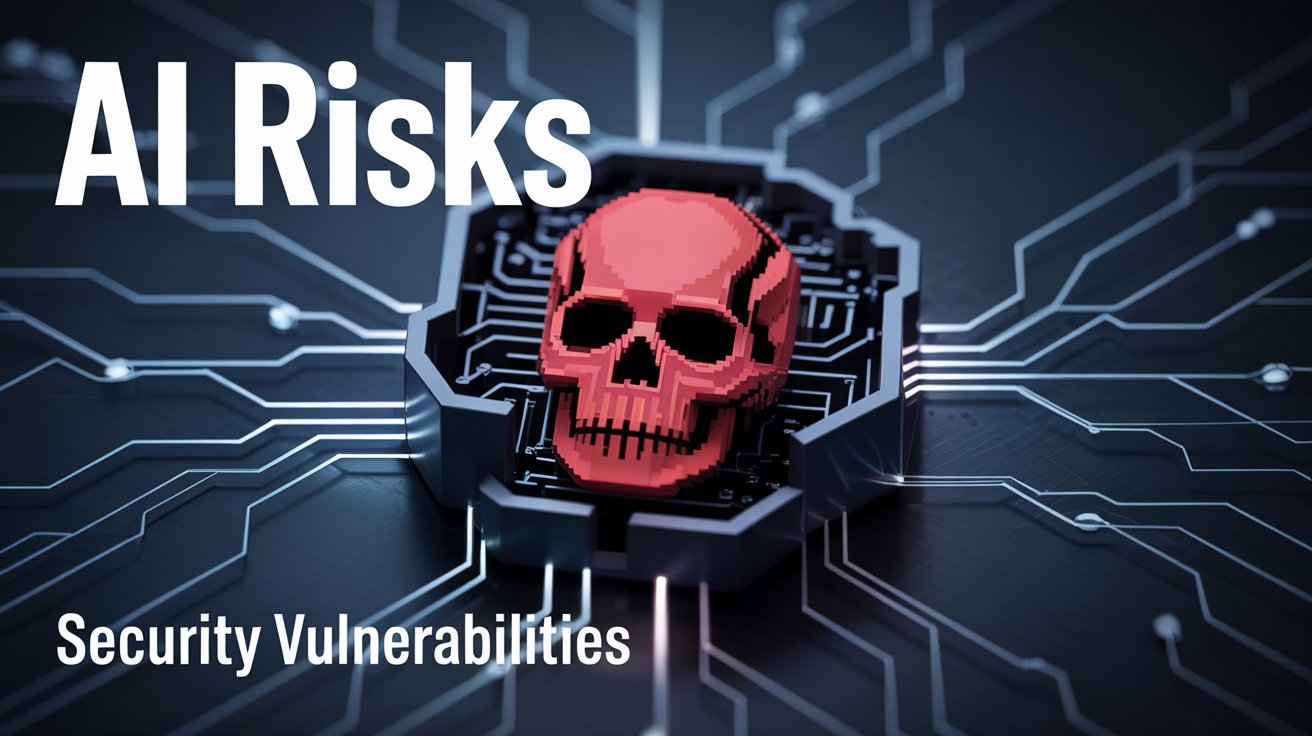Published on 15 May 2025

Artificial intelligence is now embedded in everyday business operations from email filtering and data analysis to customer service chatbots and automated decision-making. While these tools increase efficiency, they also open the door to new security vulnerabilities that traditional defences aren’t equipped to handle. As adoption accelerates, it’s critical for businesses to understand the risks AI introduces and how to mitigate them.
1. Data Exposure and Privacy Risks
AI systems rely on massive datasets to learn and operate effectively. These datasets often contain sensitive business or personal information. If not properly secured, AI models can inadvertently expose this data through leaks, breaches, or even during regular usage. For example, employees using AI chatbots may unintentionally input confidential information, which could be stored or processed in ways that compromise data privacy.
2. Automated and Scalable Cyberattacks
Cybercriminals are also using AI to scale their operations. AI can generate realistic phishing emails, automate vulnerability scanning, and even adapt malware in real time to bypass security tools. These automated attacks are faster, harder to detect, and can target hundreds or thousands of victims at once. Businesses must be prepared for this new breed of AI-powered threats Stanham (CrowdStrike, 2025).
3. Model Manipulation and Adversarial Attacks
AI systems can be manipulated by feeding them deceptive or malicious input data, known as adversarial attacks. This tactic is used to trick AI models into making incorrect decisions. In cybersecurity, this might mean evading detection systems or triggering false alarms. For companies deploying AI in security, finance, or customer service, the implications of a compromised model can be serious.
4. Lack of Transparency and Explainability
Many AI models operate as “black boxes,” meaning their decision-making processes are not easily understood. This lack of transparency can hide vulnerabilities, mask poor performance, and make it harder to identify if something has gone wrong. In regulated industries, it also poses compliance risks. As Weiss (Reuters, 2025) notes, the more autonomy AI agents are given, the more difficult it becomes to predict and control their behaviour, raising the stakes for governance and oversight.
5. Overreliance on AI Systems
As businesses integrate AI into more critical operations, there is a tendency to over-trust these systems. This creates a single point of failure if the AI is compromised, poorly trained, or makes an incorrect judgment. Human oversight and manual controls are essential for maintaining balance and ensuring AI remains a tool, not an unchecked authority.
6. Third-Party and Supply Chain Risks
Many organisations use third-party AI tools or APIs, which come with their own security standards—or lack thereof. If these tools have vulnerabilities, they can become a weak point in your system. Businesses must assess the security posture of any external AI vendor they work with and ensure clear data handling policies are in place. As Palo Alto Networks (2025) highlights, assessing the full lifecycle of AI tools, including third-party integrations, is essential for minimising exposure.
AI doesn’t need to be a liability. With the right security practices, it can be a powerful tool. Here are steps businesses can take to reduce risk:
1. Monitor for unusual behaviour. Watch for signs of model drift or unexpected outputs.
2. Limit sensitive data exposure. Avoid inputting confidential information into AI tools unless they are clearly designed for secure data handling.
3. Vet third-party vendors. Ensure AI providers follow strong security protocols and are transparent about data use.
4. Implement layered security. Combine AI with traditional defences like firewalls, endpoint protection, and network monitoring.
5. Use explainable AI where possible. Select models that offer traceability and transparency.
6. Maintain human oversight. Keep people in the loop, especially when AI tools are used in decision-making.
AI brings both powerful opportunities and real security risks. As it becomes more integrated into business infrastructure, it’s crucial to view AI as a security priority, not just an efficiency tool. By understanding potential vulnerabilities and putting the right safeguards in place, organisations can confidently embrace AI while keeping systems and data protected.
For more guidance on implementing AI securely, reach out to Bluebell IT or check out our guide on best practices for Microsoft’s AI-powered Copilot.


© 2025 Bluebell IT Solutions - All rights reserved
SEO and Website Design by Loop Digital